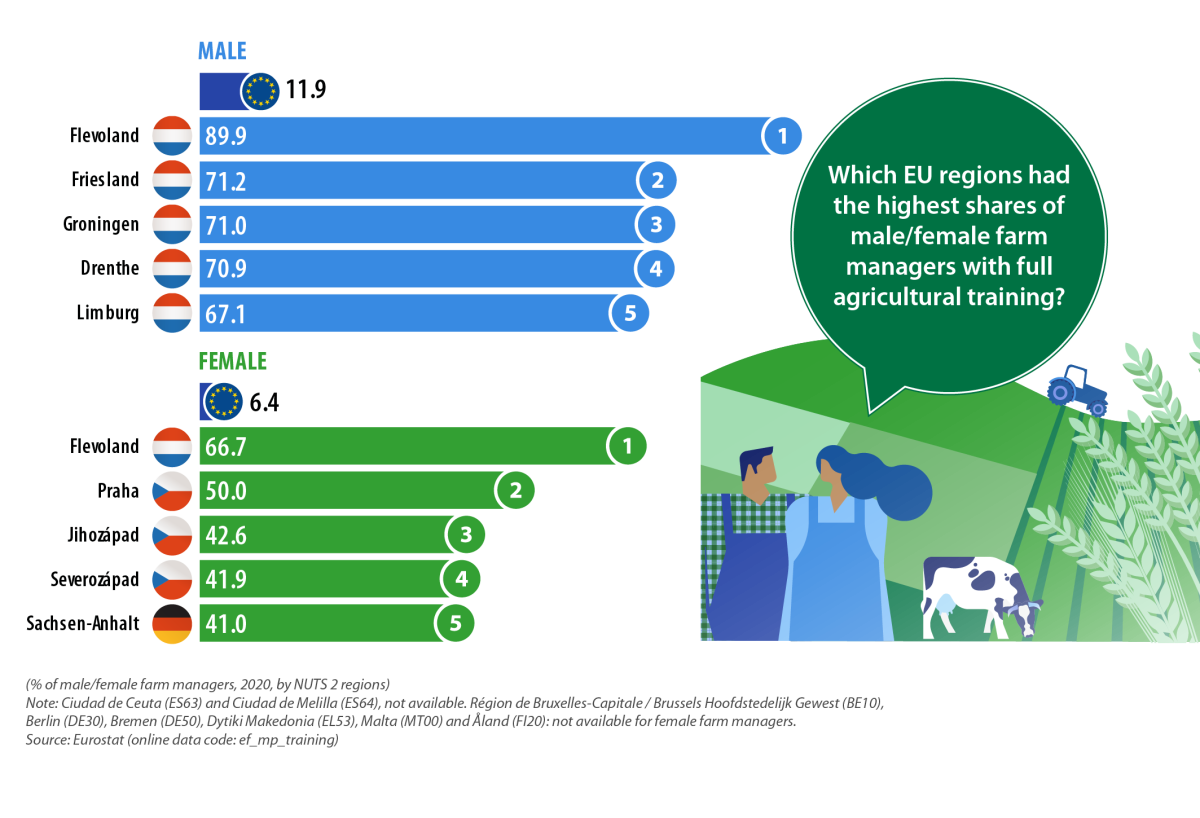Eurostat | Agriculture statistics at regional level
In 2020, there were approximately 9.1 million farms in the European Union (EU). Together, they used 1.55 million km² of land, almost two fifths (37.8 %) of the EU’s total land area. These headline figures underline the important impact that farming can have on natural environments, natural resources and wildlife. Indeed, farm managers within the EU are increasingly being encouraged to manage the countryside as a public good, so that the whole of society may benefit.
Farms in the EU fulfil a vital role in providing safe and affordable food. Agricultural products, food and culinary traditions are a major part of the EU’s regional and cultural identity. This is, at least in part, due to a diverse range of natural environments, climates and farming practices that feed through into a wide array of agricultural products.
From a statistical perspective, this edition of the Eurostat Regional Yearbook marks a milestone insofar as it publishes data from the latest agricultural census. Every 10 years, in accordance with the Food and Agriculture Organization of the United Nations (FAO), EU Member States carry out an agricultural census. The latest of these was conducted in 2020/2021. It covers approximately 300 variables, with the information collected spanning a broad range of topics, including: general characteristics of the farm and the farm manager; land use and livestock; the agricultural labour force; animal housing and manure management; and support measures for rural development. Data from the census may help frame policy debates, answering questions such as:
- Who will farm in the future given the large share of older farm managers?
- How many women are farming?
- Is agriculture becoming dominated by big business?
- Is organic farming expanding?
It is important to note that the agricultural census took place during the COVID-19 crisis. While this had a direct impact on various aspects of data collection (for example, the preparation and running of data collection instruments or the selection of human resources to carry out the census), many statistical offices rapidly adapted their working practices to make use of alternative methods (telephone or online surveys; additional use of administrative sources). While these changes undoubtedly brought benefits and ensured the census was conducted according to schedule, they may have impacted on the quality of results when compared with ‘normal’ circumstances (for example, due to lower response rates or more room for misunderstanding complex technical questions). Finally, the pandemic – as with practically all sectors of society – had a direct impact on the agricultural sector and farming communities. Given the vast majority of variables collected in an agricultural census refer to the structure of farms (rather than the annual output of crops and livestock), it is likely that COVID-19 had a relatively small impact on most of the results. Nevertheless, this is something to bear in mind when interpreting results from the 2020 census, in particular those for variables that are related to labour force or to other gainful activities.
Within the context of the 2023 European Year of Skills, the infographic above depicts EU regions with the highest proportions of female and male farm managers having undertaken full agricultural training. On average, some 6.4 % of female farm managers in the EU met this criterion, while a somewhat higher share was recorded for male farm managers (11.9 % had undertaken full training). An analysis of NUTS level 2 regions reveals that Flevoland in the Netherlands had the highest share of farm managers with full agricultural training. This was the case for female farm managers (two thirds or 66.7 % had undertaken full agricultural training) and for male farm managers (nine tenths or 89.9 % had undertaken full agricultural training).
The final chapter in this publication presents regional agricultural statistics. It focuses on three principal subjects:
- the agricultural labour force, with a special focus on farm managers (analysed by sex and age);
- farms, analysed by size and by specialisation;
- the economic accounts for agriculture that provide information on the performance of agricultural activity, through the ratio of intermediate consumption to output and the share of total value added from agriculture in all economic activities across the EU economy.
...
Full article available via the link below.

